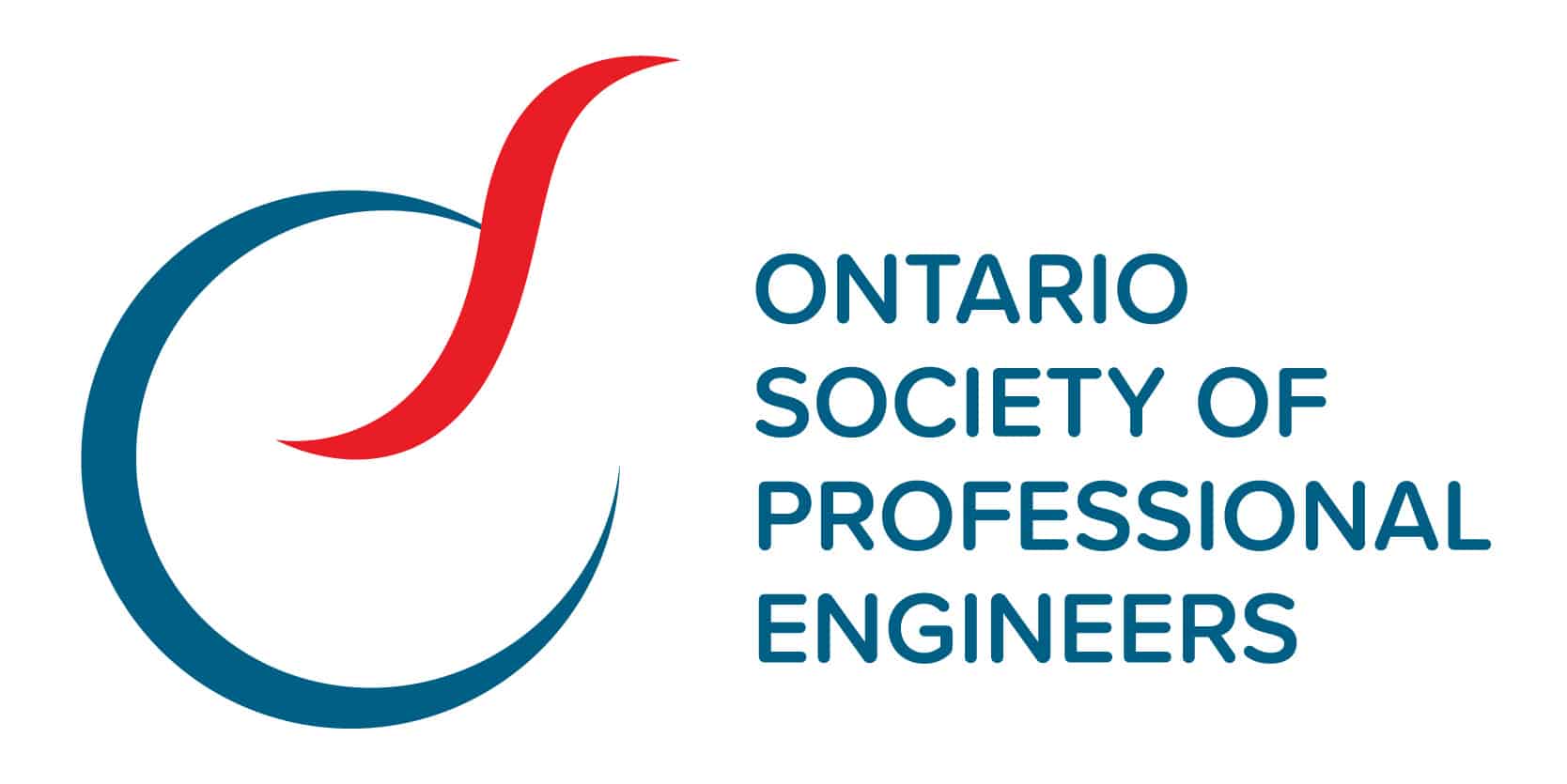
Engineering the Future: Insights from Anthony Colangelo at the St. Lawrence Seaway Management Corporation
As National Engineering Month progresses, we’re highlighting key figures in Canada’s engineering sectors to explore their insights on the industry’s trajectory.
Recently I met with Anthony Colangelo, Operational Technology and Electrical Engineering Supervisor for the Niagara Region to talk about his experiences at The St. Lawrence Seaway Management Corporation (SLSMC). In this article, he talks about his journey, the challenges he faces, and the exciting developments he’s witnessing in the engineering landscape. Join us as we delve into his unique perspective on the intersection of technology, sustainability, and innovation in Canada’s marine industry.
Tell me a bit about yourself & your background.
I’ve been with The St. Lawrence Seaway Management Corporation since 2021. I hold a bachelor’s degree in Electrical and Computer Engineering from McMaster University. In my current role at the SLSMC, I’m the Operational Technology and Electrical Engineering Supervisor for the Niagara Region. My area of responsibility is the Welland Canal, essentially from Lake Erie to Lake Ontario. The SLSMC also serves the Montreal/Lake Ontario section, with our head office located in Cornwall, Ontario. I’ve been here only a few years, but my professional journey has spanned over 30 years, with various roles, mostly focused on electrical controls and automation. I worked as the lead electrical controls for several powertrain projects in the automotive industry and supported that for many years. Subsequently, I took the role of the head of engineering for an international technology company specializing in turnkey automation systems, mainly serving the aerospace and automotive industries. My career involved a lot of travel, taking me all over the world. I had great experiences with great people, learning about many different cultures. Ultimately, I was born and raised in the Niagara region and was always fascinated by the Welland Canal. Working at the SLSMC feels like a homecoming for me, presenting a great opportunity to leverage my skills and contribute.
Why is National Engineering Month important to you and the engineering profession overall?
I’ve had the privilege of working at the forefront of technology, engaging in highly automated applications with organizations that demand world-class performance from their solution providers. I’ve been a part of remarkable teams that deployed fully autonomous operational systems. In many cases, we were doing things that no one had ever done before, so there was no ‘technology playbook’ to follow; we had to develop it. I believe that one of the most important things about engineering and the profession is teamwork. Whenever you look at real engineering success stories, there’s a cross-functional team of talented people, including engineers that work together to achieve their common goals.
For the SLSMC, NEM presents an amazing opportunity to showcase what we do – and the impact of our work. Engineering plays a key role in the operation and maintenance of SLSMC infrastructure (locks, bridges, etc.), as well as in the application of new technologies aimed at ensuring the safe and reliable passage of vessels.
The theme for NEM 2024 is lifelong learning. What does the concept of lifelong learning mean to you? Why is lifelong learning important in the work that you do?
Personally, I believe one of the reasons I became an engineer is that I equate engineering with learning. As a child, I was always curious, taking things apart just to understand how they work (much to the chagrin of my parents). Most of the time, I was able to put things back together. Curiosity leads to learning, and learning requires listening, and listening leads to engaging others, which helps to better understand things. Once one understands things, they can better contribute, and in this case, contribute to the success of the SLSMC. My personal mantra is ‘there’s always room for improvement’. We learn from our successes and just as importantly, we learn from our failures. I’m a firm believer in post-project reviews. They’re necessary, whether positive or maybe not so positive. It’s a necessary step for any project to learn from mistakes, so that you can be better the next time.
At the SLSMC, I’m responsible for operational technology and electrical engineering projects. Technology is changing rapidly, so we have to learn and adapt quickly, which makes it exciting. But one thing I didn’t realize before I worked here was how much technology is utilized at the SLSMC. For example, the flight locks are inspiring to watch, but there’s an unbelievable amount of technology behind the operation. That’s what makes it interesting! We’re transitioning from a situation where people were operating those locks locally to remote operations. This is where it becomes very important to take all these wide ranges of technologies and apply them. Another point of interest is that the Welland Canal is completely energy self-sufficient as it generates its own hydroelectric power thanks to a generating station. The station generates 6 megawatts of power. This is made possible by taking advantage of the large flight locks, where there’s a significant water drop, which is then used to produce electricity.
Over the last few years, we’ve automated our lock and bridge operations to a large degree. We’re remotely operating our locks and bridges. This shift has increased requirements for security and access control, ensuring that only the right people have access to the locks. We have security systems with vision analytics, voyage information systems, and vessel scheduling systems. With all that work at play here, one may see how learning becomes extremely important, especially with all those rapidly changing technologies.
Can you tell me a little more about The St. Lawrence Seaway Management Corporation and the types of projects you work on?
The St. Lawrence Seaway is a marine highway system that extends 3,700 kilometers from the Atlantic Ocean to the Great Lakes. Vessels must ascend 168 meters from sea level to Lake Erie, making it a significant feat. The SLSMC maintains many infrastructures, including 37 bridges—both mobile and fixed—and 13 Canadian locks. Additionally, the Welland Canal operates along a 40-kilometer stretch from Lake Erie to Lake Ontario, with 8 kilometers of wharfs.
Our mission is to pass vessels through a safe, secure, and reliable waterway system in a cost-effective, efficient, and environmentally and socially responsible manner, to deliver value to the North American economy. Everyone plays a role in the success of our mission.
Through various projects and initiatives, the operational technology (OT) team supports that mission through the implementation and integration of the technologies already mentioned. Some of our current projects include:
- Bridge Operations – Enhanced Safety: Currently, ensuring that bridges are clear of vehicles and pedestrians is done via a manual process where operators perform camera sweeps around the bridge. We are exploring projects to further improve safety by using cameras, vision systems, and analytics to automatically detect pedestrian and vehicle traffic on our bridges.
- Mooring of Vessels – the manual tie-ups of vessels have been replaced with an automated Hands-Free Mooring (HFM) system at each lock.
- Voyage Information System – building on AIS, we are using AI and analytics to leverage data and enable marine partners to make decisions that lead to greater overall effectiveness such as optimization of vessel traffic and maximizing fuel efficiency.
How has the engineering profession changed over the past 5 to 10 years & how is The St. Lawrence Seaway Corporation capitalizing on those changes?
When I was a kid, all the locks at bridges were locally occupied by operators. They were adjacent to the locks they controlled, manually tying up the vessels and securing them before a lockage, then proceeding with the lock operation. Likewise, with the bridges, operators were stationed on the span of the bridge or adjacent to the bridge, where they could view and control vehicle and pedestrian traffic and operate the bridge when a vessel was approaching.
Today, through the application of many engineering efforts, locks and bridges are now operated remotely, many kilometers away, at central operations control centres (one for the Welland Canal and the other for the St. Lambert/Montreal Region). Each of our control centres has a series of workstations. In a relatively short time, we completely transformed how we operate at the Seaway.
Technology continues to advance at an ever-increasing rate. This has had a profound effect on the engineering profession. For example, with rapid advancements in analytics and artificial intelligence (AI), engineers have to quickly understand and evaluate new technologies and their benefits. As a result, it has become increasingly complex to make value-based engineering decisions within a rapidly changing environment. But that’s also what makes it a fun challenge!
Are there any specific programs, initiatives, or outcomes happening at The St. Lawrence Seaway Corporation that you’d like to tell me about?
Each year, we continue to build, improve, and expand our efficiencies and capabilities with some of the following efforts:
- Winter works: Between January and March, when the system is closed to navigation for the winter months, it’s “go” time! This is where our civil, mechanical, and electrical engineering/OT teams work together with our maintenance personnel and contractors and accomplish a tremendous amount of work in a very short period of time. Often, it involves draining part or all of the canal system, an engineering feat within itself. As you may suspect, project execution requires a lot of engineering, planning, and coordination with many different interdisciplinary groups. For me, it represents the core of what collaboration means, and we have a great team in place to take this on.
- Greener Future: We are gradually replacing gasoline-powered fleet vehicles with electric vehicles. Our team has installed charging stations powered by our green, hydro-generated powerhouse to support our growing fleet of electric vehicles. As a result of these efforts, the SLSMC has already successfully reduced its Greenhouse Gas Emission levels below the targets set by the Federal Government for the year 2030. We are quite proud of that accomplishment!
What does the future of engineering look like and how does your company fit into that?
I see the future of engineering continuing to leverage technology to improve and innovate. With a rapidly evolving landscape, our role and challenge in engineering at the SLSMC is to decide, from a value perspective, how to most effectively apply these solutions to meet our mission.
In addition, the future of engineering involves working in more collaboration with other disciplines. Earlier, I referenced the importance of teams. But it extends beyond the engineering team; everyone, all stakeholders, has a role to play. In addition to contributing to overall operational effectiveness, the SLSMC has social responsibilities to fulfill in a sustainable manner.
As such, innovation and technology are at the heart of our engineering mandate, and our technology group specifically will continue to play an integral role in these exciting projects to move these mandates forward.
This means the future of engineering (and SLSMC) requires a dynamic workforce of engineers who can identify, evaluate, make value decisions, and execute change within the context of our requirements in a rapidly evolving technology environment.
Any final thoughts?
What I learned upon joining the SLSMC is that it’s a tremendous opportunity to make a significant impact, not just on the marine industry but on the environment as a whole. It’s a dynamic workplace, and there’s never a dull moment!
Learn. Grow. Thrive. Together.
National Engineering Month is Ontario’s platform for celebrating the remarkable world of engineering. With a dynamic mix of insightful discussions, industry expertise, and diverse viewpoints, we’re showcasing the best of the profession. Join us in advancing engineering excellence, igniting interest in future professionals, and recognizing the vital role engineers play in society. Be a part of the #NEM2024 experience by attending an event. Explore all the exciting details at nemontario.ca.


